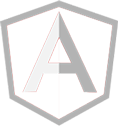Approach
-
1. Discovery
Discover the client, their problems and business objectives. Review the best possible solutions to a successful ROI. Initial Meeting
Initial Meeting
Discuss ideas, goals and objectives. Determine solutions to problems and discuss critical information determined for the proposal.
 Define Project and Resources
Define Project and Resources
Depending on your projects goals, we determine the necessary resources and technologies to complete the project on a timely basis.
 Proposal and Cost
Proposal and Cost
Submit a proposal outlining necessary project information and cost. The proposal will outline milestones, schedules, deliverables, resources and processes.
 Client Approval
Client Approval
Once an agreement has been made on the proposal, we are ready to move onto the next stage.
-
2. Strategy
Define a strategy that meets solutions and business objectives. Develop an understanding on requirements and project scope. Objectives
Objectives
The project has commenced. Define the target audience, deliverables, creative/technical requirements and steps necessary to achieve success.
 Vision, Scope and Reach
Vision, Scope and Reach
Determine realistic deliverable limits to achieve each milestone. What tasks are within reach and which are not. What tasks require more attention than others.
 Content Strategy
Content Strategy
Develop a strategy for content delivery thats based on the target audience. Communication is key to engaging your users.
 Client Approval
Client Approval
Once the client is satisfied with a solid strategy, a sign-off is made prior to moving on to next stage.
-
3. Design
Define the structure of information and establish graphical components. Information Architecture
Information Architecture
Define the overall structure of information via navigation and functional logistics. Components developed such as site maps, wireframes and user flows.
 Design Prototype
Design Prototype
We craft a look and feel based on the information architecture and the users in mind. We will provide multiple prototypes to choose from.
 Revisions
Revisions
We review, modify and polish design accents through attention to detail expertise as well as client revisions.
 Client Approval
Client Approval
Once client is satisfied with the Design stage, we can move on to Development.
-
4. Development
Making your designs come to life. Functional Prototype
Functional Prototype
We optimize the chosen design for the web by hand coded HTML. We use style sheets (CSS) to match the designs graphical assets and apply CSS3 or jquery for visual enhancements.
 Content Mangement Integration
Content Mangement Integration
After the prototype has been developed we then implement a content management system (CMS) thats provides backend access to every page and pertaining content.
 Quality Assurance and Testing
Quality Assurance and Testing
Once the CMS is in place we then initialize a full review by several administrators, tested on all browsers types and computer platforms.
 Launch
Launch
Last minute tweaks and final approval by client... website is launched!
-
5. Evolution
Measuring the websites success and getting the right exposure. SEO
SEO
We help you implement a solid search engine optimization (SEO) game plan for more exposure to your industry or potential clients.
 Project Management
Project Management
We can help with web maintenance and strategy for future growth and prosperity.
 Support
Support
We provide any type of website support 24/7.
 Measure
Measure
We provide the necessary tools and consultations to measuring your websites successes and drawbacks.
Technology
The web evolves on a daily basis. We believe adaptability plays an important role in succeeding todays digital landscape. We embrace new technologies and potentially leveraging its capabilities. Responsive web design is a website that responds to the device that accesses it and delivers the appropriate output for it uses responsive design. Rather than designing multiple sites for different-sized devices, this approach designs one site but specifies how it should appear on varied devices.











Web standards are the formal, non-proprietary standards and other technical specifications that define and describe aspects of the World Wide Web. In recent years, the term has been more frequently associated with the trend of endorsing a set of standardized best practices for building web sites, and a philosophy of web design and development that includes those methods.
 WordPress is a free and open source blogging tool and a dynamic content management system (CMS) based on PHP and MySQL. It has many features including a plug-in architecture and a template system.
WordPress is a free and open source blogging tool and a dynamic content management system (CMS) based on PHP and MySQL. It has many features including a plug-in architecture and a template system.
 Google Analytics shows you how people found your site, how they explored it, and how you can enhance their visitor experience. With this information, you can improve your website return on investment, increase conversions, and make more money on the web.
Google Analytics shows you how people found your site, how they explored it, and how you can enhance their visitor experience. With this information, you can improve your website return on investment, increase conversions, and make more money on the web.
 Every site needs to be maintained through its entire life cycle. A contemporary website has a life cycle of 4-5 years before technology and business changes force a redesign. During this period the website has to be monitored and maintained for all kinds of issues, problems and technology shifts.
Every site needs to be maintained through its entire life cycle. A contemporary website has a life cycle of 4-5 years before technology and business changes force a redesign. During this period the website has to be monitored and maintained for all kinds of issues, problems and technology shifts.
